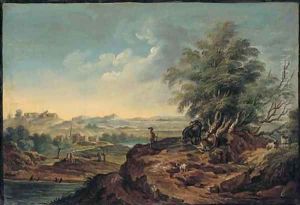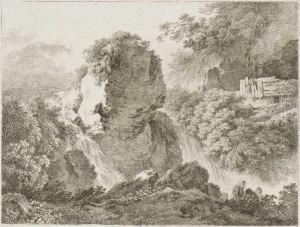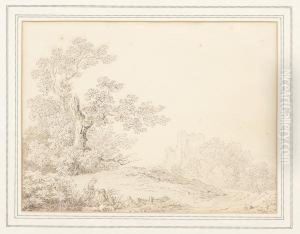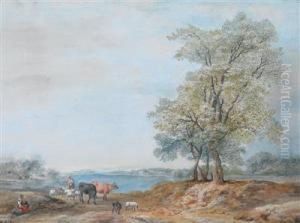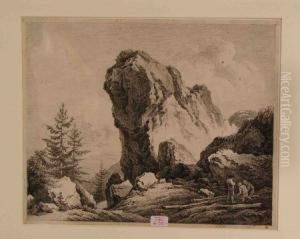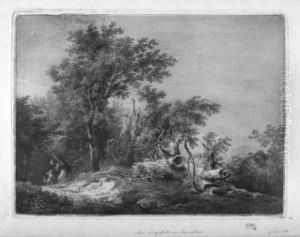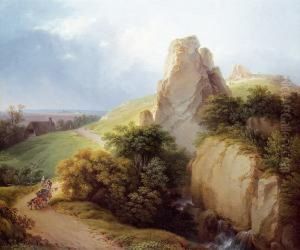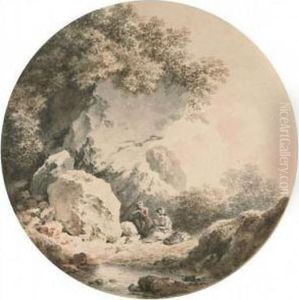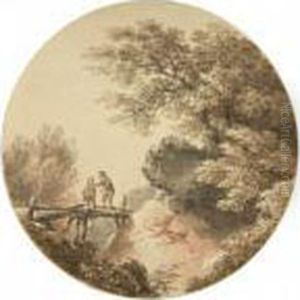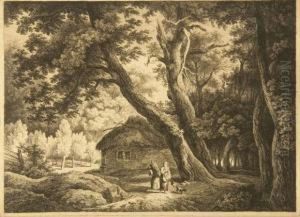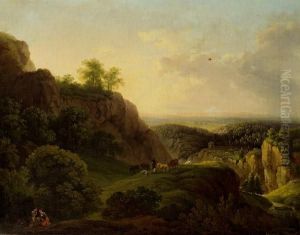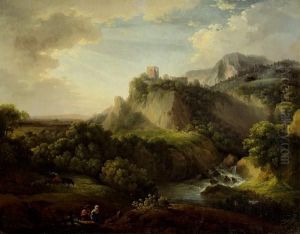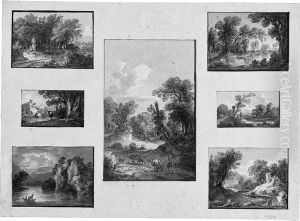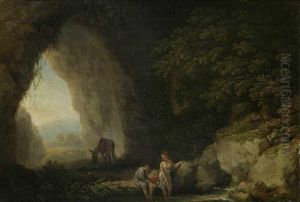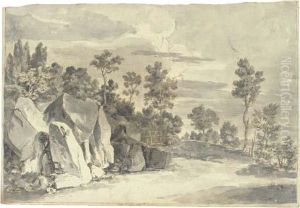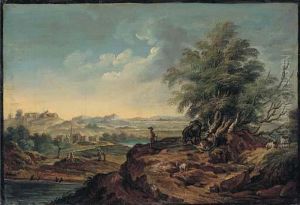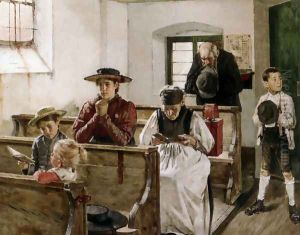Martin von Molitor Paintings
Martin von Molitor was an Austrian painter and engraver born on September 7, 1759, in Vienna, Austria. He came from a family with a military background, but he chose to pursue a career in the arts. Molitor displayed an early aptitude for drawing and painting and subsequently trained under the guidance of notable artists of his time.
Initially, Molitor focused on landscape painting, which was a popular genre during the 18th century. His landscapes typically reflected the classical ideal, often depicting serene and idyllic scenes influenced by the work of French and Italian masters. Molitor's landscapes were appreciated for their clarity, refined composition, and the serene mood they evoked.
Molitor also gained recognition for his work as an engraver. He created engravings after his own designs as well as after the works of other artists. These engravings contributed to the dissemination of artistic ideas and images during a period when such visual communication played a crucial role in the spread of artistic styles and tastes.
In addition to landscapes, Martin von Molitor was also known for his historical paintings and illustrations. He took inspiration from the events of his time, such as the Napoleonic Wars, and from past historical moments. His historical works often contained a strong narrative element and were marked by careful attention to detail and a commitment to depicting historical accuracy.
The late 18th and early 19th centuries were a time of significant change in Europe, both politically and culturally, and Molitor's work reflects some of these transformations. Despite not being as widely recognized as some of his contemporaries, Molitor's contributions to landscape painting and engraving were respected by his peers and are still of interest to scholars of Austrian art history.
Martin von Molitor's life and career were cut short when he passed away on September 3, 1812, in Vienna, just days before his 53rd birthday. While he may not have achieved the lasting fame of some of his contemporaries, his work remains a testament to the rich artistic environment of Vienna during the late 18th and early 19th centuries.
